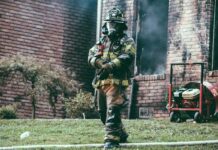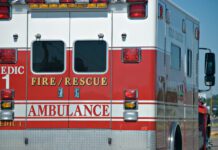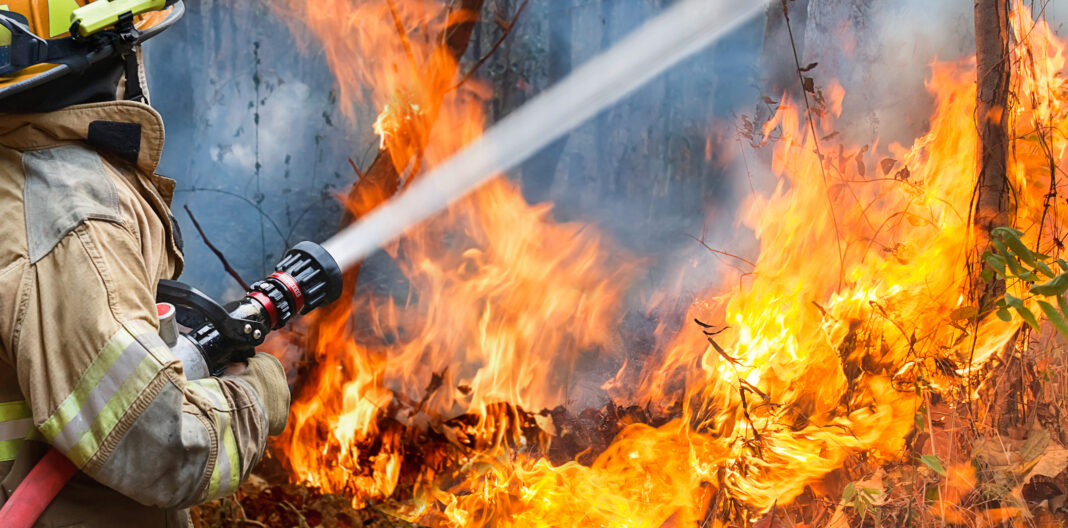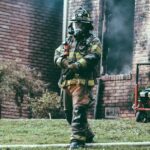Deadly wildfires have cascaded across the Texas Panhandle, killing at least one person and threatening to destroy more homes, cattle, and livelihoods as the biggest fire in state history continues to engulf more land.
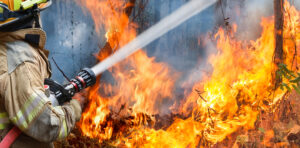
In addition to the damage caused by the fire to homes and other structures, an 83-year-old woman was killed. Tragically, Joyce Blankenship died when her home was surrounded and enveloped by the Smokehouse Creek Fire. She lived in Stinnet, which is northeast of Amarillo. Her grandson Nathan Blankenship confirmed her death to CBS.
The wildfire, known as the Smokehouse Creek Fire has now torched more than 1 million acres in Texas. The blaze has also damaged more than 31,500 acres in Oklahoma as of February 28th.
The fire is one of five major fires burning in the Texas Panhandle, with experts reporting no end in sight. The wildfires have already scorched about 2,000 square miles which is roughly the same amount of land as the state of Delaware.
According to the latest developments, power outages are a major concern as North Electric Cooperative said it has approximately 115 miles of line to rebuild. In Hemphill County alone, 400,000 acres are burned, scores of homes have been destroyed and thousands of cattle have died.
“My thoughts are with the State of Texas and its residents as they undergo this devastating inferno that has no end in sight,” said Gerald Singleton, leading fire litigation attorney at Singleton Schreiber. “Due to certain weather conditions, the fire continues to be fueled and therefore amplified, causing more chaos. With one fatality reported so far, my thoughts are with the victim’s family and others who are being terrorized by this disaster.”
If you or someone you know has been injured in a Texas wildfire, contact the fire litigation attorneys at Singleton Schreiber by emailing info@singletonschreiber.com or by calling 806-692-2191.
Texas Wildfire Fatalities and Dangers
In recent years, Texas has experienced an increase in the frequency and severity of wildfires, posing significant risks to both property and lives. Despite efforts to mitigate these natural disasters, understanding the dangers associated with wildfires is crucial for residents, emergency responders, and policymakers alike.
Texas, known for its vast expanses of land and diverse ecosystems, is particularly susceptible to wildfires, especially during periods of drought and extreme heat. The combination of dry vegetation, strong winds, and human activity can quickly escalate a small fire into a raging inferno, threatening homes, wildlife habitats, and human lives.
Factors Contributing to Fatalities:
Several factors contribute to the risk of fatalities during wildfires in Texas:
- Rapid Spread: Wildfires in Texas can spread rapidly, fueled by dry vegetation and wind. This rapid spread can outpace evacuation efforts, trapping individuals in the path of the fire.
- Limited Escape Routes: Rural communities and remote areas may have limited road infrastructure, making evacuation challenging, especially when multiple wildfires erupt simultaneously.
- Smoke Inhalation: The smoke generated by wildfires can pose significant health risks, particularly for vulnerable populations such as the elderly, children, and individuals with respiratory conditions.
- Delayed Notifications: In some cases, residents may receive delayed or insufficient notifications about evacuations, leaving them unaware of imminent danger.
Recent Tragedies:
The devastating impact of wildfires on Texas communities cannot be understated. Recent tragedies, such as the Bastrop County Complex Fire in 2011 and the wildfires that ravaged the Panhandle in 2017, resulted in loss of life and extensive property damage. These events serve as stark reminders of the urgent need for proactive wildfire prevention and preparedness measures.
Staying Safe During Wildfires:
While wildfires pose significant dangers, there are steps individuals can take to mitigate risks and stay safe:
- Stay Informed: Monitor local news outlets, weather forecasts, and official emergency alerts for updates on wildfire activity and evacuation orders.
- Have an Evacuation Plan: Develop a detailed evacuation plan that includes multiple escape routes and designated meeting points for family members.
- Prepare an Emergency Kit: Assemble an emergency kit containing essentials such as food, water, medications, and important documents to sustain you during evacuation.
- Maintain Defensible Space: Clear vegetation and debris from around your home to create defensible space, reducing the risk of property damage from wildfires.
- Practice Fire Safety: Exercise caution when using outdoor equipment, disposing of cigarettes, or engaging in activities that could spark a fire.:
As Texas continues to grapple with the threat of wildfires, awareness of the associated dangers is paramount. By understanding the factors contributing to wildfire fatalities and taking proactive measures to mitigate risks, individuals can better protect themselves, their families, and their communities from the devastating impact of these natural disasters. Together, we can build resilience and foster a culture of wildfire preparedness in the Lone Star State.
“We hope firefighters are able to get these fires under control before more lives are lost,” added Mr. Singleton. “For those living in and around these wildfires, they will have a long road ahead to rebuild their lives, homes, businesses, communities, and jobs.”
If you or someone you know has been injured in a Texas wildfire, contact the fire litigation attorneys at Singleton Schreiber by emailing info@singletonschreiber.com or by calling 806-692-2191.
